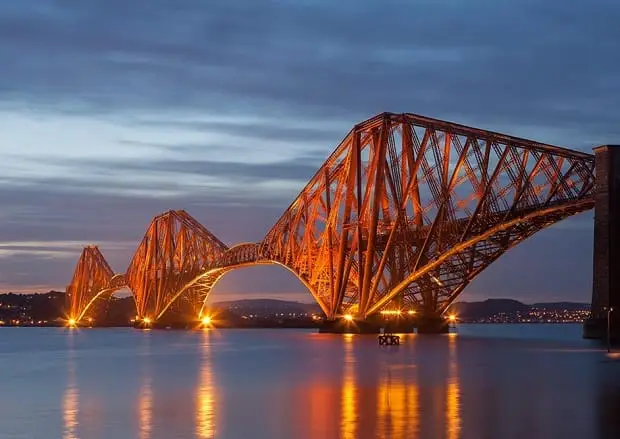A cantilever bridge is a bridge that uses structures projecting horizontally into space, supported only on one end, to hold weight, traffic, and environmental stress without relying solely on vertical suspensions or arch supports. For anyone seeking to understand how and why cantilever bridges became one of the defining achievements of civil engineering, the key lies in the balance of tension and compression. These bridges are designed to support long spans where traditional construction methods are difficult such as deep valleys, wide rivers, or areas where workers cannot erect temporary support scaffolding underneath. In simple terms, the cantilever bridge allows engineers to build into space from each side until the structure meets in the middle. But the story of the cantilever bridge is not just technical; it is deeply historical, human, and cultural. From the late nineteenth century to the present day, the cantilever form has been used as a symbol of innovation, risk, and architectural beauty. The engineering behind it challenges gravity, reshapes landscapes, and often stands for decades or centuries as a statement of human ambition.
Understanding the Cantilever Principle
The core engineering principle behind the cantilever bridge is balance. Engineers design these bridges with two main forces in mind: compression and tension.
- Compression pushes a material together.
- Tension pulls a material apart.
In a cantilever, the section anchored to the ground remains in compression, while the part projecting outward remains in tension. If these forces are not balanced correctly, the structure would collapse. The cantilever design allows spans to extend farther than simple beams while requiring less supporting infrastructure than suspension or arch bridges. This dual capacity is what makes cantilevers ideal for long spans over deep waters or rugged terrain where placing piers or scaffolding is extremely expensive, dangerous, or impossible.
Why Cantilever Bridges Were Revolutionary
Before the invention of cantilever bridges, most large bridges were built using arches. However, arches require strong ground support at many points, and the further a span extends, the more difficult the construction becomes. In places where foundations are weak or uneven, arches become impractical. Cantilever bridges changed this limitation. By projecting outward from each side, engineers could start building on land and work toward the middle without constructing temporary support in the open space. This allowed bridges to cross massive rivers such as the St. Lawrence River in Canada, the Mississippi River in the United States, and deep coastal fjords in Europe and Asia. Their arrival represented a new era in engineering confidence. Cantilever bridges signal the industrial age mass steel production, rail systems, and national infrastructure expansion.
Table: Key Features of Cantilever Bridges
| Feature | Description | Why It Matters |
|---|---|---|
| Structural Support | Supported at one end and free on the other | Allows building over large gaps without temporary supports |
| Materials Used | Steel, reinforced concrete, high-tensile alloys | Materials must handle both tension and compression |
| Typical Spans | Medium to long spans (150m–400m+) | Ideal for large rivers and deep valleys |
| Construction Method | Built outward from anchor points | Enables safer construction over hazardous terrain |
| Load Distribution | Balanced between compression and tension | Prevents collapse by maintaining structural equilibrium |
| Maintenance Needs | Regular inspection for stress fatigue | Critical for long-term safety, especially under heavy traffic |
| Visual Appearance | Strong, geometric, and often imposing | Forms a distinctive silhouette in industrial-era architecture |
Historical Evolution of Cantilever Bridges
Early Concepts
Although the principle of cantilevering existed in ancient buildings and temples, its first practical bridge applications emerged in Asia. Wooden cantilevers appeared in early Himalayan footbridges, where logs were wedged into slopes and overlapped to cross narrow mountain gorges.
Industrial Breakthrough
The real revolution came with steel. By the late 1800s, nations were racing to expand rail systems. Engineers needed bridges that could support the heavy weight of locomotives, which earlier designs could not handle efficiently.
Forth Bridge (1890)
The most iconic example is the Forth Bridge in Scotland, completed in 1890. Its bold red steel and enormous triangular frames made it both a marvel and a public controversy. At the time, the idea of a bridge holding its own weight with no arch beneath it seemed almost impossible. Yet it stood and still stands serving trains continuously for more than a century.
20th Century Expansion
As cities grew and vehicle traffic increased, cantilever bridges became a preferred design for:
- City-to-suburb connectors
- River-crossing highways
- Industrial shipping networks
21st Century RelevanceToday, new cantilever bridges use prestressed concrete and computer-calculated stress modeling, allowing longer, safer spans. They are symbols of modern precision and urban ambition.
Engineering Complexity and Problem-Solving
Cantilever bridges are elegant in concept but difficult in practice. Engineers must consider:
- Wind load: Strong winds can twist a long cantilever.
- Temperature shifts: Heat causes expansion; cold causes contraction.
- Material fatigue: Repeated vehicle weight can slowly weaken steel or concrete.
- Seismic activity: Earthquakes test lateral flexibility.
These factors make cantilever bridges some of the most carefully calculated structures in engineering.
Real-World Uses and Cultural Significance
Cantilever bridges do more than move people; they shape identity.
- They connect rural and urban zones.
- They allow economic trade between regions.
- They become city landmarks and postcards.
- They inspire architectural styles in stadiums and museums.
When a community sees a cantilever bridge rising, it often feels like witnessing progress.
Why Cantilever Bridges Still Matter Today
Even with the rise of cable-stayed and suspension bridges, cantilever bridges remain vital, especially when:
- Terrain prevents underground anchoring for suspension towers
- Water depth makes construction platforms impossible
- Heavy rail systems require exceptional weight support
Their durability, predictability, and structural logic keep them relevant.
Conclusion
The cantilever bridge is more than a method of crossing space it embodies a broader human desire to push outward, to stretch limits, to reshape landscapes rather than be constrained by them. It is a balance of force, a study in patience, and a visible reminder that progress requires careful calculation. Wherever a cantilever bridge stands, it stands not only as infrastructure but as a testament to engineering courage.











